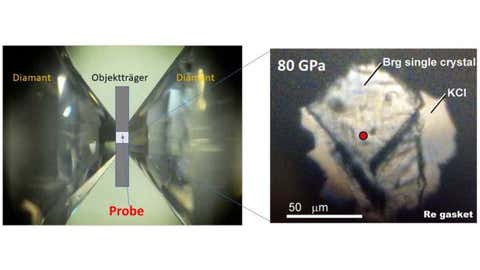
About 4.5 billion years ago, a large amount of cosmic dust and gas consolidated under the power of gravity to form our home planet—the Earth. However, the young Earth was nowhere similar to the paradise we live in today. Back then, Earth hostile environment could be characterised by hellish temperatures and oceans of magma gushing through its surfaces.
It took millions of years for the Earth to cool down and evolve into a habitable world. However, far beneath our feet, the Earth is still hot with one layer of molten metal, nearly as hot as the Sun! And the cooling process is still ongoing, gradually continuing over time as we move towards the core of the Earth.
The core is the planet’s heart, and it is of prime importance for life here as it provides Earth with its protective magnetic fields. One day, the core will eventually cool down and become solid. Scientists believe that when that happens, Earth will become similar to Mars, affecting every planetary process as we know it.
Recently, scientists estimated that Earth’s interior is cooling faster than expected. And that’s alarming for life as we know it on this planet.
“Our results could give us a new perspective on the evolution of the Earth’s dynamics. They suggest that Earth, like the other rocky planets Mercury and Mars, is cooling and becoming inactive much faster than expected," explains professor Motohiko Murakami at ETH Zurich and the lead author of this new study.

Scientists arrived at this conclusion by studying Bridgmanite, a mineral commonly found at the boundary between the Earth's core and mantle that conducts heat. This mineral could be a key source to get answers on how quickly the core would cool down.
The boundary layer is the place where the viscous rock of Earth's mantle is in direct contact with the hot iron-nickel melt of the planet's outer core, explains the statement from the ETH Zurich. Simply put, this is where the interplay of the planet’s internal heat takes place.
The team did a lab experiment to determine how much bridgmanite conducts from the Earth's core to the mantle. Their lab environment mimics the conditions prevailing inside the Earth. It enabled them to measure the thermal conductivity of the bridgmanite.
"This measurement system let us show that the thermal conductivity of bridgmanite is about 1.5 times higher than assumed," says Prof Murakami.
This simply signifies higher heat flow from the core into the mantle. Meaning, the core is cooling much faster than previous assumptions. But how long will it take for Earth’s core to solidify?
As per prof Murakami: "We still don't know enough about these kinds of events to pin down their timing." Nevertheless, the cooling will not be fast enough to have any impact on our immediate future on human scales.
The results were published in the journal Earth and Planetary Science Letters and can be accessed here.
**
For weather, science, and COVID-19 updates on the go, download The Weather Channel App (on Android and iOS store). It's free!








